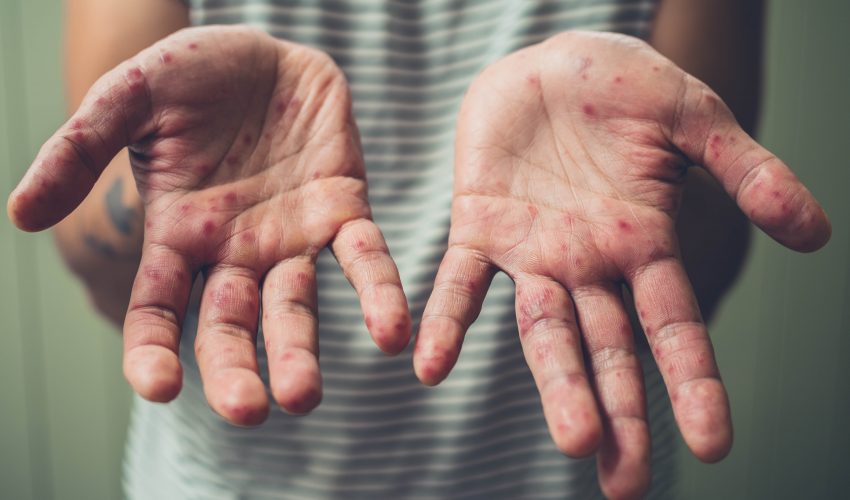Post Views: 2,380
Views No Comments
The end of 2018 marked one of the biggest outbreaks of measles in recent history, with over 17 outbreaks throughout the United States. According the CDC, from January 1 to March 14, 2019, there have been over 268 confirmed cases of measles in 15 states, including Arizona, California, Colorado, Connecticut, Georgia, Illinois, Kentucky, Michigan, Missouri, New Hampshire, New Jersey, New York, Oregon, Texas, and Washington.
Measles itself is a dangerous respiratory illness associated with fever, malaise, and severe coughing, coryza, and conjunctivitis, otherwise known as the “three C’s.” Another distinctive aspect of measles is a rash that begins in the head, spreads to the trunk, and then to the lower extremities. The disease is highly contagious and the risk of epidemic exists even before the person experiences any visible symptoms, such as the rash.
While measles has been officially eliminated from the US since the year 2000, there is still the possibility of outbreaks every year, especially from those who travel to countries with poor vaccination coverage, become infected, and then return to the country, inadvertently triggering an outbreak. Measles consists of around a 90% infection rate, which means that 9 out of 10 people in close contact with a measles patient will also become infected. The virus can be transmitted through sneezing, coughing, or even breathing. A space where a measles patient has been can remain infectious for up to 2 hours after they have left.
While the symptoms can be kept in check through prompt medical treatment and hospitalization, the complications that stem from lack of treatment are dangerous, or even lethal. Of the many complications that a person can experience, acute encephalitis is, by far, the worst, as it can cause lasting consequences, such as permanent brain damage, even after the disease has been cured. Unfortunately, it is estimated that around 1 out of every 1,000 patients will develop this complication. Furthermore, it is estimated that the same number of patients will die from the respiratory or neurological symptoms associated with measles.
Due to obvious reasons, children are at the highest risk of developing complications, especially those who are not yet of age for vaccinations or who have not been vaccinated. Furthermore, if infected, they are also those who might suffer the most from the subacute sclerosing panencephalitis (SSPE), a complication characterized by the degeneration of the central nervous system, and that manifests 7 to 10 years after the initial measles infection. SSPE is a condition that causes seizures and intellectual deterioration.
However, children are not the only ones at risk of developing complications. According to the CDC, those who are at the highest risk of developing lasting consequencse from this disease are also adults over 20 years of age, pregnant women, and patients with a depressed immune system, such as those who suffer from leukemia or HIV.
The main form of preventing measles is through vaccination, which is administered to children from 12 months to 12 years of age, as part of the measles-mumps-rubella vaccine. A single vaccination is more than 93 percent effective in preventing any significant infection from taking place, while two doses are approximately 97% effective. Regardless, this vaccine is always administered in two doses. In case the patient does not respond to the first, the second dose has an almost flawless response rate in relation to the first.
Unfortunately, there is no treatment for measles. The only objective of medical intervention for this disease is by easing the symptoms, and waiting until the body heals from the infection naturally.
With that being said, one of the most important forms of treatment for measles, especially in younger children, is by administering vitamin A as soon as they receive their diagnosis.
Vitamin A deficiency, according to the World Health Organization (WHO), is associated with the delayed recovery from this disease, as well as with a higher rate of post-measles complications. Furthermore, the condition itself contributes to acute vitamin A deficiency and xerophthalmia, which is one of the main causes of preventable childhood blindness in Africa. The WHO has observed and documented that two doses of vitamin A can contribute greatly to the recovery of the patient, and have made it into standard treatment for everyone who is hospitalized from this disease.
The recommended dosage of vitamin A, however, will vary according to the patient’s age. In the WHO measles and vitamin A guidance manual, we can observe the following recommended dosages:
Furthermore, the administration of a third dose is recommended around 4 to 6 weeks after the first two, but only if the patient is showing signs of vitamin A deficiency.
The end of 2018 marked one of the biggest outbreaks of measles in recent history, with over 17 outbreaks throughout the United States. Get the facts about the measles’ symptoms, causes, and treatment options.

